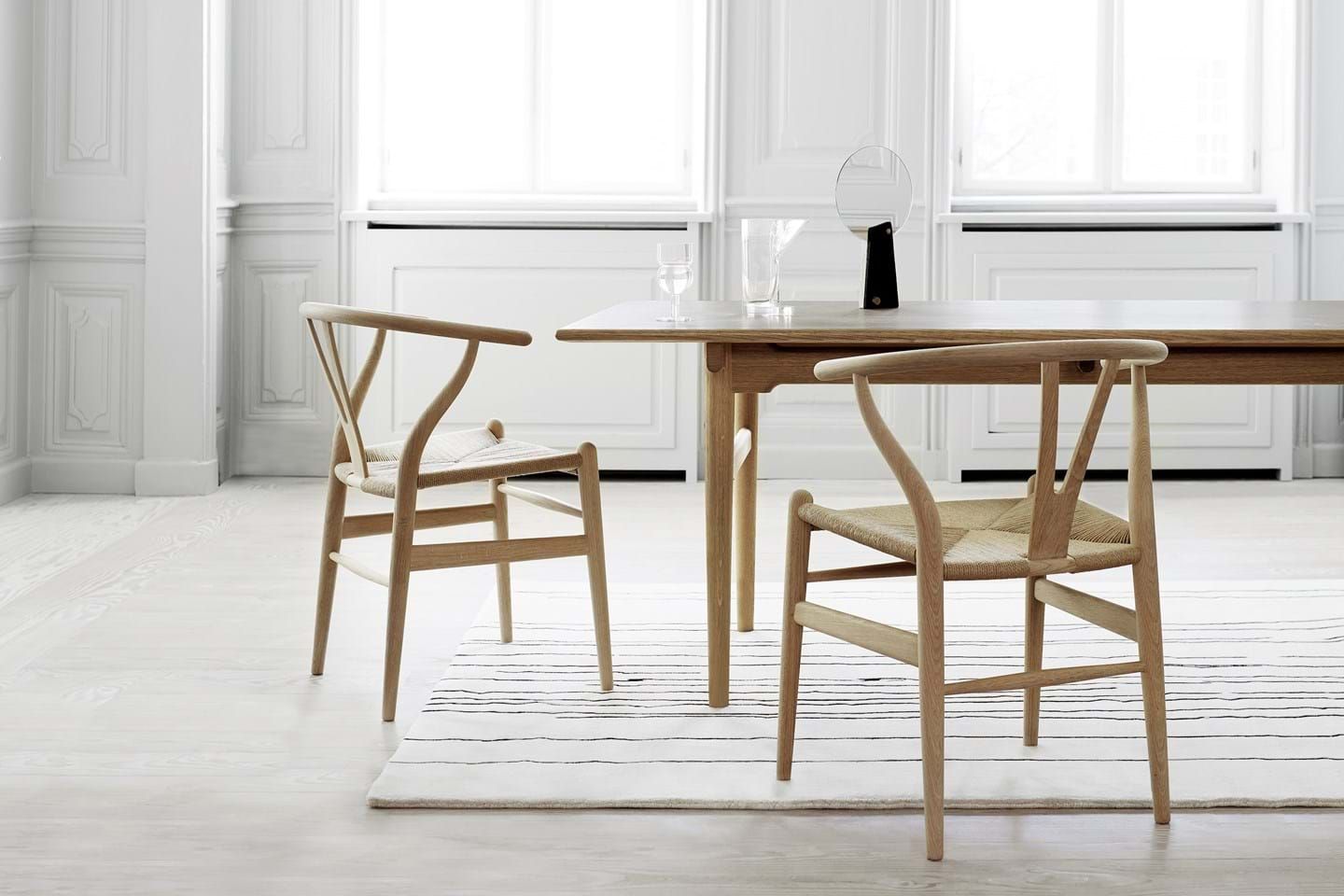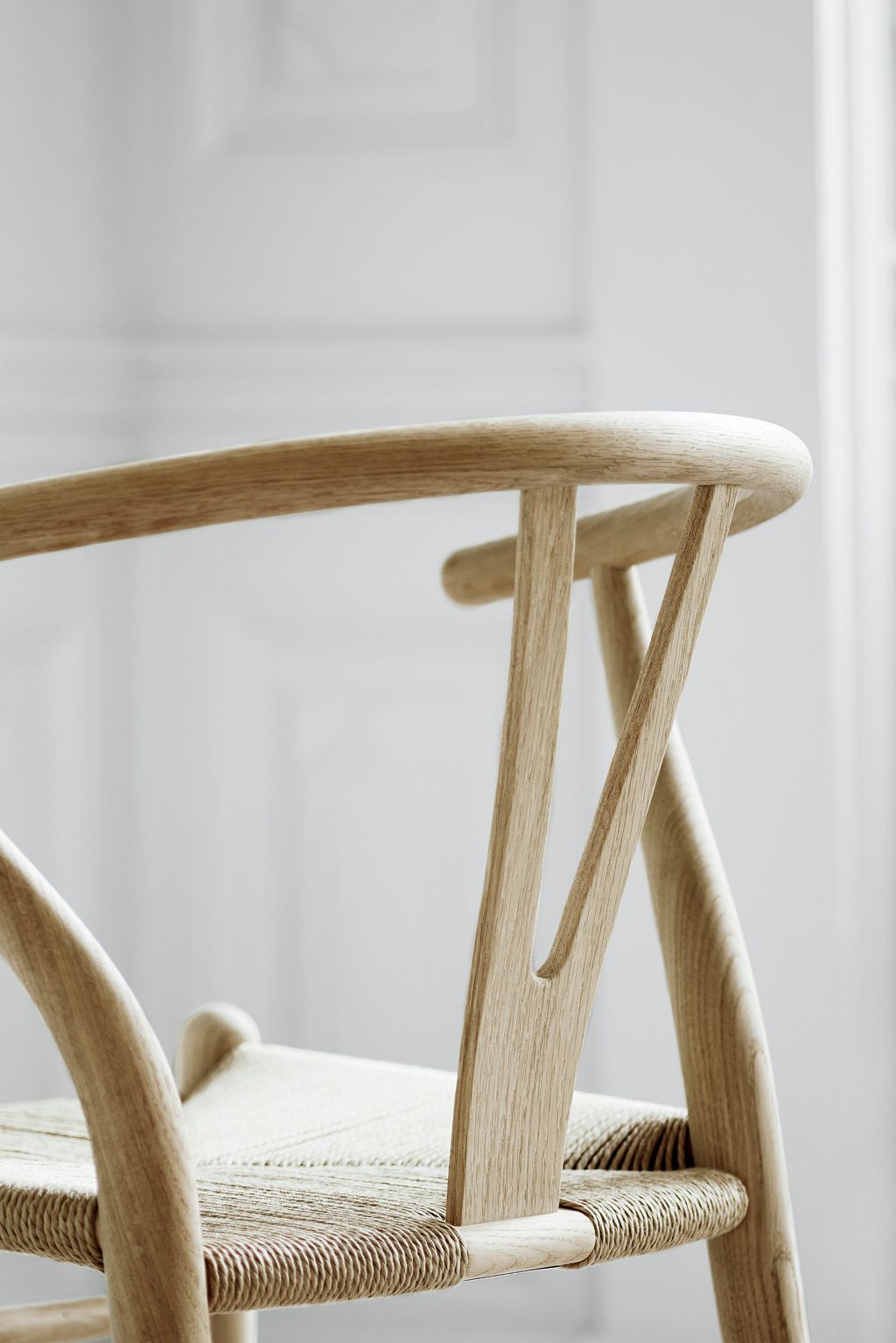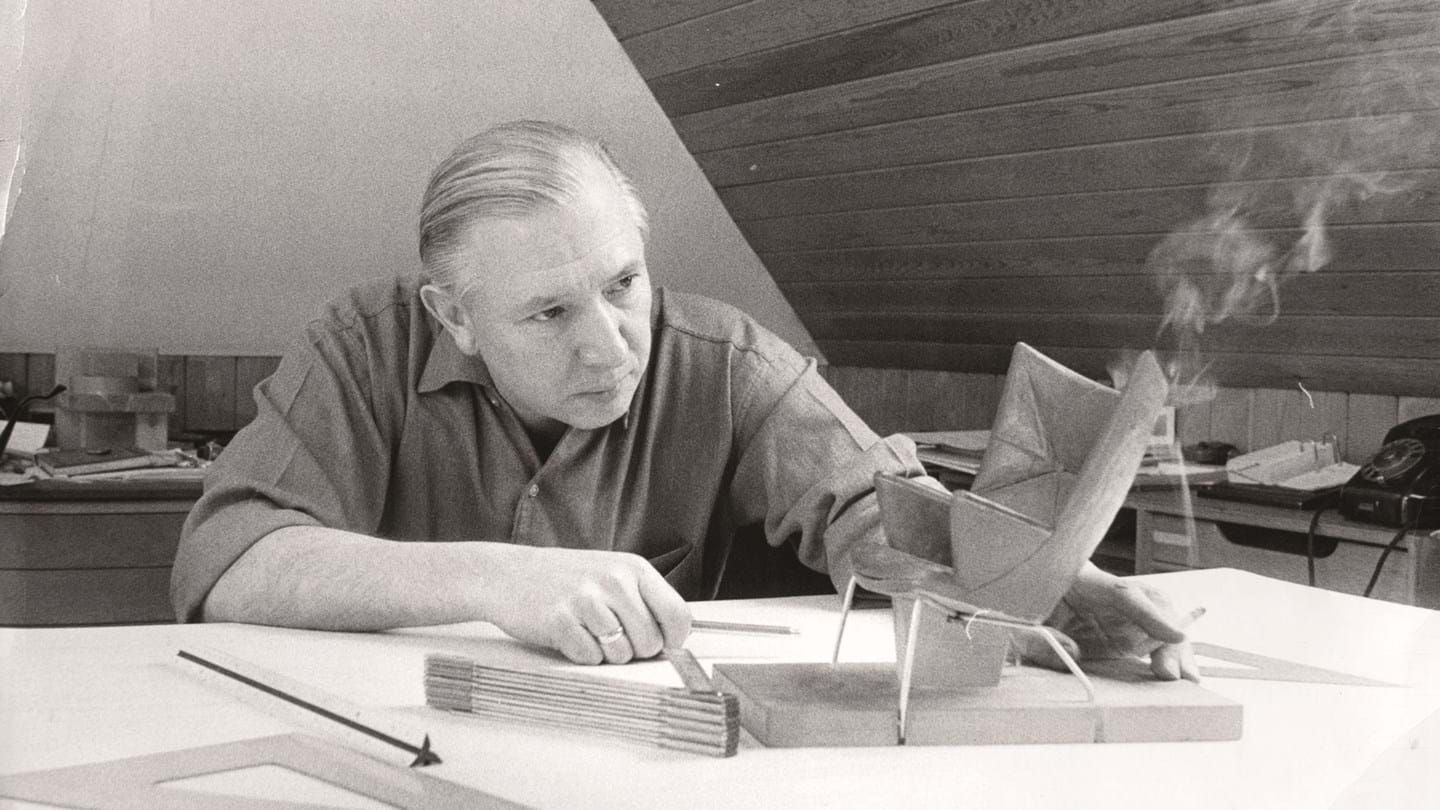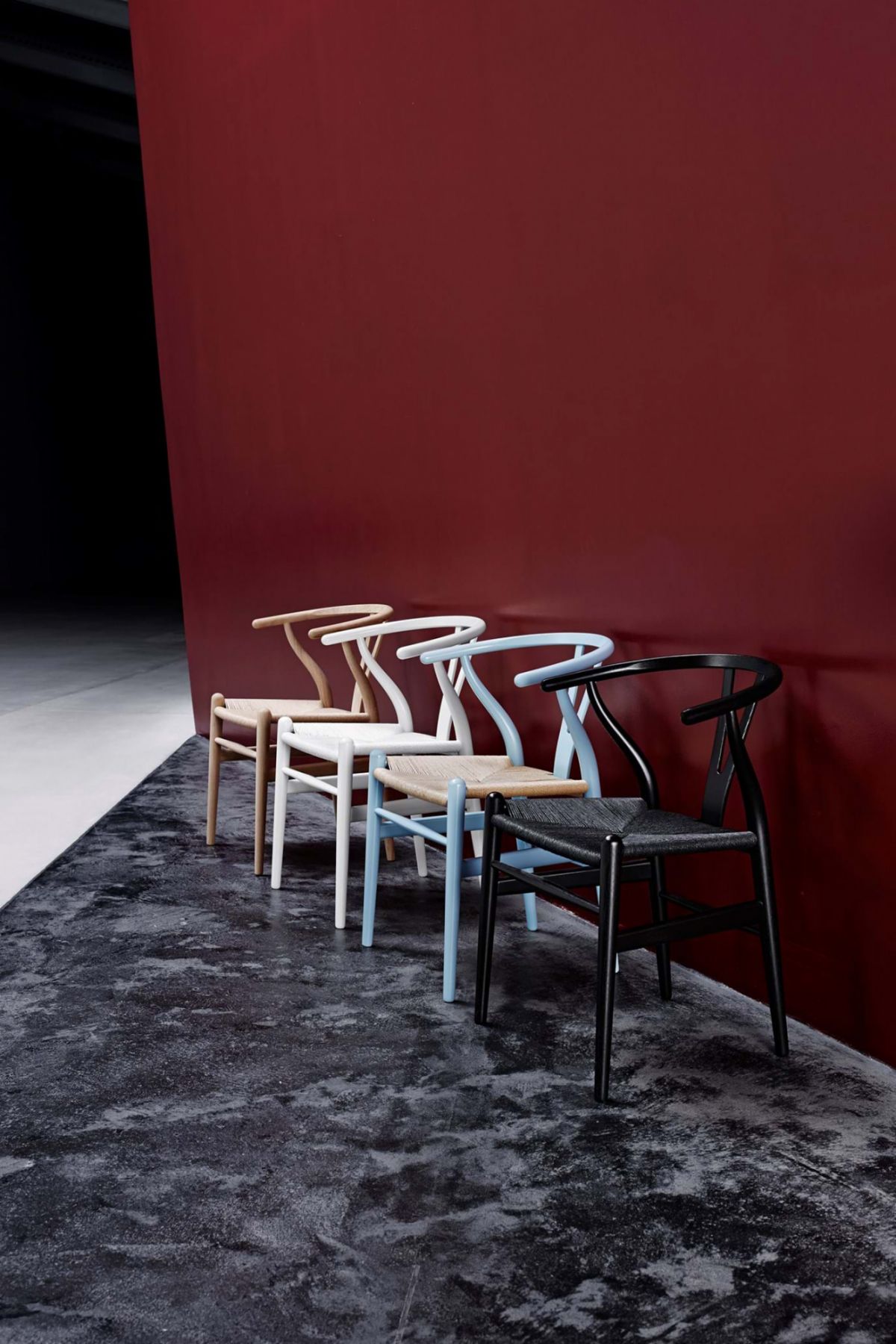With its distinctive Y-shaped back and graceful appeal, the Wishbone chair by Hans J. Wegner is seen as an elegant classic. Here, we explore the history and the universal appeal of this sculptural piece
Two words—refined simplicity—sum up the description of this iconic seat: the Wishbone chair. The brainchild of Danish designer Hans J. Wegner, the Wishbone chair was first designed in 1949. Also known as the CH24 or the ‘Y’ chair, the classic piece is a timeless favourite and an enduring icon of modern Danish design. Interestingly, while the Wishbone chair is an exemplar of the modern Scandinavian design language, Wegner drew inspiration from the horseshoe form of Chinese wooden chairs that were used in the Ming dynasty.
Available in 50 colourways, the chair is crafted from approximately 120m of paper cord, and more than 100 steps are required to manufacture each piece; the process to craft each chair takes approximately three weeks to make.
See also: Design Icon: The Le Corbusier Chairs Seen in Movies, TV Shows and Korean Dramas


The chair is a classic choice of furnishing for designers. British architectural designer John Pawson is a fan; the Wishbone chairs make for the perfect dining set in his self-designed countryside abode in Cotswolds, UK. British design guru Kelly Hoppen is another admirer of this chair; her set of Wishbone chairs feature black wooden frames that look right at home in the dining room of her Cotswolds abode.
See also: Home Tour: Enter Kelly Hoppen's Countryside Residence in the Cotswolds










